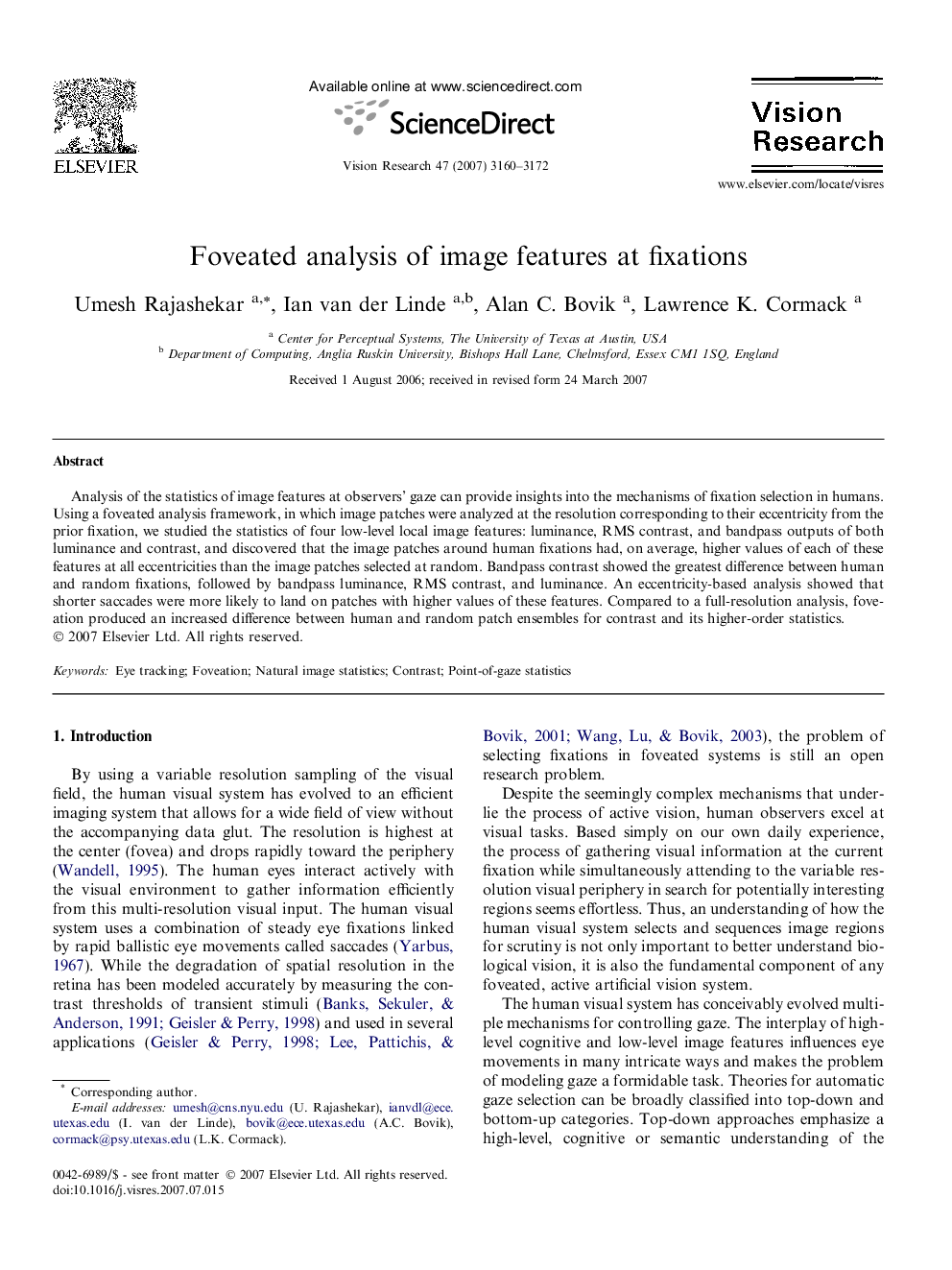| Article ID | Journal | Published Year | Pages | File Type |
|---|---|---|---|---|
| 4035423 | Vision Research | 2007 | 13 Pages |
Analysis of the statistics of image features at observers’ gaze can provide insights into the mechanisms of fixation selection in humans. Using a foveated analysis framework, in which image patches were analyzed at the resolution corresponding to their eccentricity from the prior fixation, we studied the statistics of four low-level local image features: luminance, RMS contrast, and bandpass outputs of both luminance and contrast, and discovered that the image patches around human fixations had, on average, higher values of each of these features at all eccentricities than the image patches selected at random. Bandpass contrast showed the greatest difference between human and random fixations, followed by bandpass luminance, RMS contrast, and luminance. An eccentricity-based analysis showed that shorter saccades were more likely to land on patches with higher values of these features. Compared to a full-resolution analysis, foveation produced an increased difference between human and random patch ensembles for contrast and its higher-order statistics.
